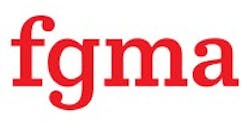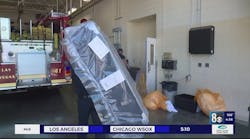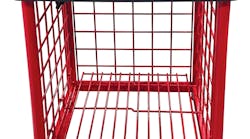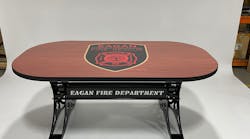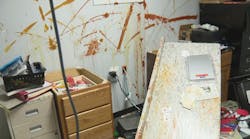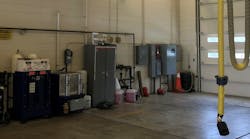Helming the construction of a new firehouse or police station can be an intimidating experience. But in their presentation Wednesday at the 2019 Station Design Conference in Rosemont, IL, Jason Estes and Raegan Porter of FGM Architects discussed ways to navigate such large building projects so they don't become overwhelming endeavors.
Hard Costs vs. Soft Costs
Hard construction costs are the expenses involved with building or renovating a station, including those connected with the site of the facility. Largely, these costs are evenly split between labor and materials, but geography can affect that division. For instance, a project's hard costs might lean more toward labor in right-to-work states.
Soft construction costs consist of designing the facility, conducting environmental surveys, permits and other related fees. Moving and relocation expenses also fall into this category.
What Does FF&E Include?
Construction costs might cover a station getting built, but they don't help fill it. That falls under the FF&E—fixtures, furnishings and equipment—budget. Evident in the name, a station's FF&E budget handles the items needed to transform an empty building into a functional facility.
But determining the specific elements that take up those budget lines can be tricky. That's why Estes and Porter have their own memorable way of keeping things straight between construction costs and FF&E. They call it the "flip and shake method," and here's how it works:
Imagine being able to pick up and flip upside down the newly constructed and furnished station, letting what's inside shake out. The loose, falling items—chairs, desks, computers and so on—would be covered under the FF&E budget, with the remaining parts of the station— floors, walls, ceilings—falling under the construction costs.
Expecting the Unexpected
While breaking down budgets for a new station's construction might help avoid initial sticker shock over a project, it doesn't eliminate the possibility of unknown costs. In fact, Estes and Porter stressed that it's almost a guarantee that building a new facility will include unplanned expenses, such as those potentially caused by inclement weather or natural disasters. It might be nearly impossible to predict those unexpected details, but that doesn't mean officials can't be pointed in the right direction.
For example, knowledge of local school schedules means missing costly construction cycles. And while tariffs on certain building materials might be unavoidable, monitoring the political landscape leading to them can keep them from being surprises.
A Little Extra Goes a Long Way
If the construction of a new police or fire station could be summed up in a single word, it would be "big." Big buildings, big budgets, big projects. But sometimes it only takes the small additions to a new facility to create the biggest impact.
As part of the budgeting process, Estes and Porter pointed out that simply adding a little extra square footage to a station's floor plan or an extra piece of furniture can enhance a department's culture. They used this approach in the design of a new police station, creating slightly larger hallways in the building. The added space helped open communication between patrol officers and detectives by providing an environment that better allowed conversations.

